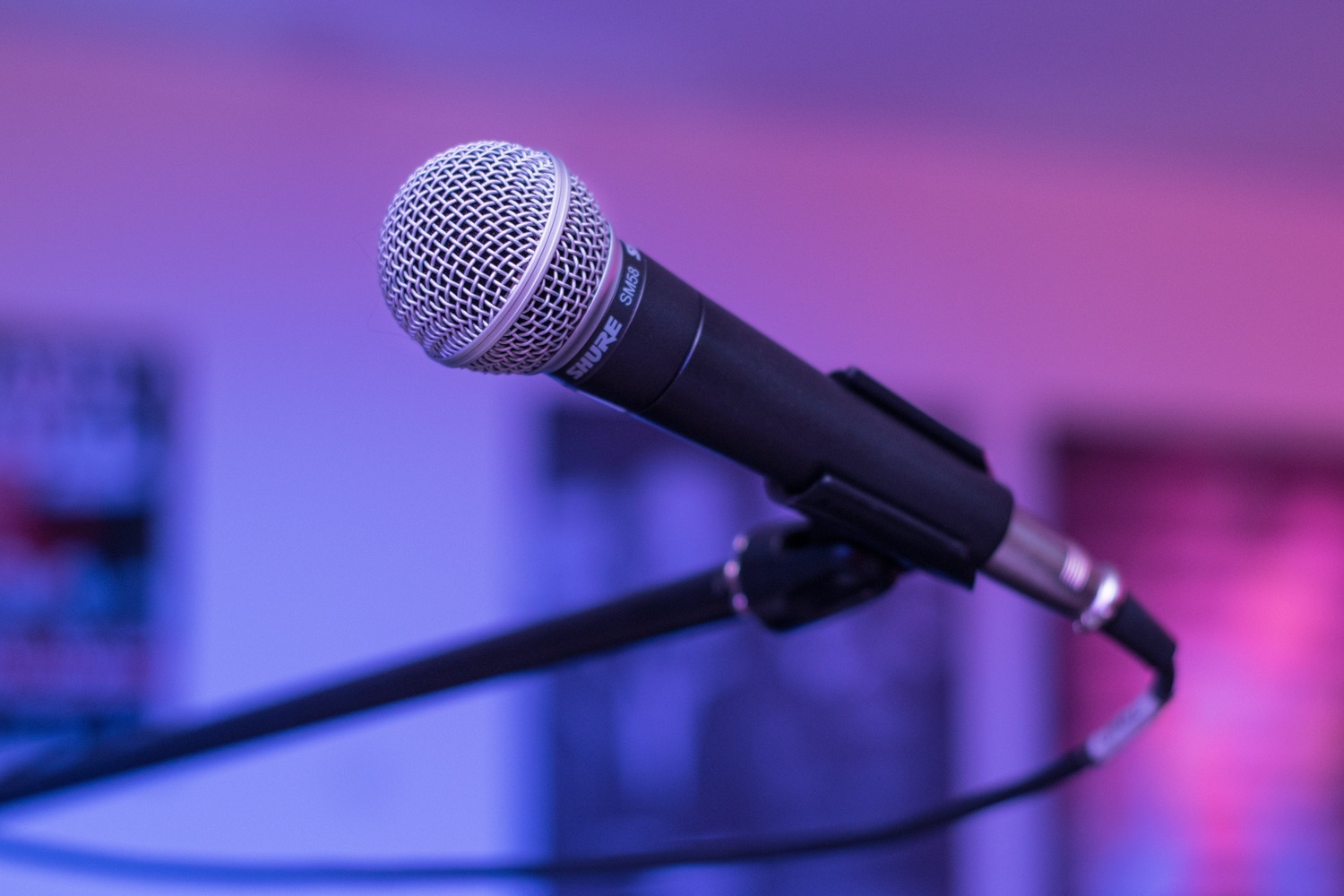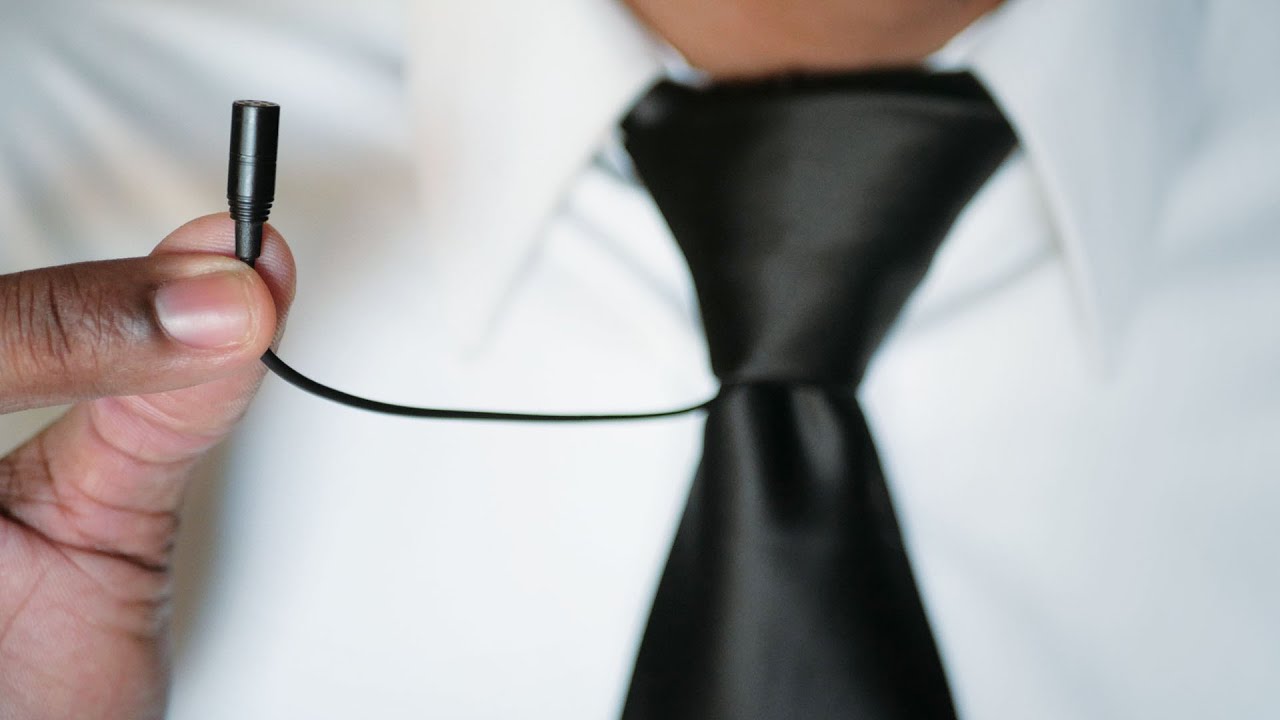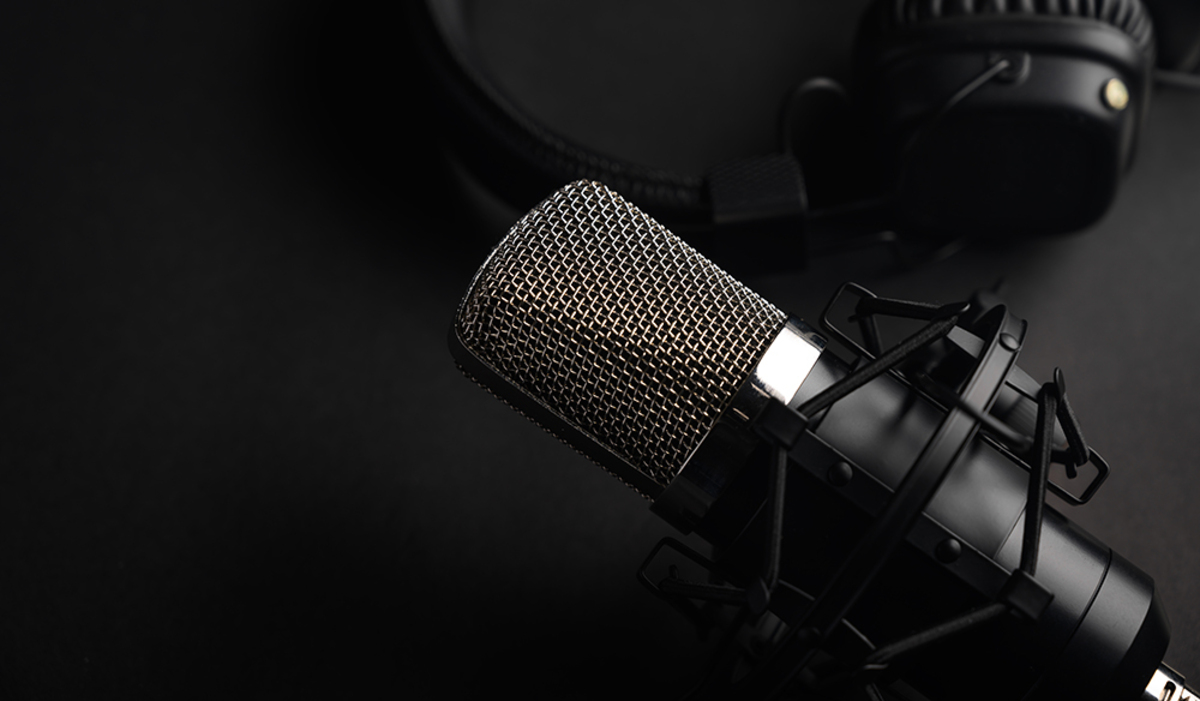Home>Devices & Equipment>Microphone>How To Reduce Microphone Feedback


Microphone
How To Reduce Microphone Feedback
Published: February 17, 2024
Learn effective techniques to reduce microphone feedback and improve your sound quality. Discover tips for managing microphone feedback issues and enhancing your audio experience.
(Many of the links in this article redirect to a specific reviewed product. Your purchase of these products through affiliate links helps to generate commission for AudioLover.com, at no extra cost. Learn more)
Table of Contents
Introduction
When it comes to capturing pristine audio, a microphone is an indispensable tool. Whether you're recording vocals, podcasting, conducting interviews, or addressing a live audience, the quality of the sound is paramount. However, one common challenge that often plagues microphone users is feedback. Microphone feedback occurs when the sound from the speakers re-enters the microphone, creating a loop that results in that dreaded high-pitched squeal or low-frequency rumble. This not only detracts from the audio quality but can also be a major disruption during live performances or recordings.
In this comprehensive guide, we'll delve into the intricacies of microphone feedback and explore various strategies to effectively reduce or eliminate it. From understanding the root causes of feedback to implementing practical solutions, this article aims to equip you with the knowledge and techniques to mitigate this common audio nuisance. Whether you're a seasoned audio engineer, a budding musician, a podcaster, or someone who simply wants to optimize their microphone setup, the insights shared here will prove invaluable.
Join us as we unravel the mysteries of microphone feedback and discover the tools and techniques that will empower you to achieve crystal-clear audio without the unwelcome interruption of feedback. Let's embark on this journey to conquer the challenges of microphone feedback and unlock the full potential of your audio recording and amplification endeavors.
Understanding Microphone Feedback
Microphone feedback, often characterized by that unmistakable screeching or rumbling sound, occurs when the amplified sound from the speakers re-enters the microphone. This creates a loop where the microphone picks up the sound, amplifies it, and sends it back through the speakers, perpetuating the cycle. The result is an unpleasant and disruptive noise that can detract from the overall audio experience.
Several factors contribute to the occurrence of microphone feedback. The proximity of the microphone to the speakers, the volume level of the audio signal, and the acoustic characteristics of the environment all play crucial roles. Understanding these factors is essential in effectively addressing and mitigating microphone feedback.
Firstly, the distance and positioning of the microphone in relation to the speakers significantly impact the likelihood of feedback. When the microphone is too close to the speakers, the chances of feedback increase as the sound from the speakers is more likely to be picked up by the microphone. Additionally, high volume levels further exacerbate the risk of feedback, as the amplified sound is more likely to re-enter the microphone, initiating the feedback loop.
Moreover, the acoustic properties of the environment can influence the occurrence of feedback. Reflective surfaces, such as hard walls and floors, can cause sound waves to bounce and potentially be captured by the microphone, contributing to feedback. Understanding these environmental factors is crucial in identifying and addressing potential sources of feedback.
By comprehending the mechanisms and contributing factors of microphone feedback, individuals can proactively implement measures to reduce its occurrence. From strategic microphone placement to utilizing technology designed to suppress feedback, the ability to anticipate and counteract feedback is instrumental in achieving clear and uninterrupted audio reproduction.
Positioning the Microphone
Strategic microphone placement is a fundamental aspect of mitigating microphone feedback. By carefully positioning the microphone in relation to the speakers and considering the acoustic characteristics of the environment, it is possible to minimize the risk of feedback and optimize the audio capture.
One effective technique to reduce feedback is to position the microphone away from the speakers. By creating a physical distance between the microphone and the speakers, the likelihood of sound from the speakers being picked up by the microphone is significantly reduced. This simple adjustment can have a notable impact on mitigating feedback during live performances, recordings, or public address systems.
Furthermore, utilizing directional microphones can offer additional control over feedback. Directional microphones, such as cardioid or supercardioid microphones, are designed to primarily capture sound from specific directions while minimizing sound from other angles. By leveraging the directional properties of these microphones, it is possible to selectively capture desired audio sources while minimizing the pickup of ambient sound and potential feedback-inducing signals.
When positioning the microphone, it is also essential to consider the acoustic properties of the environment. Avoiding placing the microphone near reflective surfaces, such as hard walls or floors, can help reduce the likelihood of sound reflections being captured and contributing to feedback. Additionally, utilizing acoustic treatments, such as absorptive panels or materials, can help minimize the impact of reflective surfaces and create a more acoustically controlled environment for the microphone.
By thoughtfully positioning the microphone and considering the interplay between the microphone, speakers, and the acoustic environment, individuals can proactively reduce the risk of microphone feedback. This approach, combined with the utilization of directional microphones and acoustic treatments, empowers users to optimize audio capture while minimizing the disruptive effects of feedback.
Using a Feedback Suppressor
Integrating a feedback suppressor into the audio setup can be an effective solution for combating microphone feedback. A feedback suppressor, also known as a feedback eliminator or a feedback reduction processor, is a specialized audio device designed to detect and mitigate feedback-inducing frequencies in real time.
Feedback suppressors operate by continuously monitoring the audio signal for frequencies that exhibit the telltale signs of feedback. When these frequencies are detected, the suppressor applies precise and narrow-bandwidth reduction to attenuate the feedback without significantly impacting the overall audio quality. This dynamic and automated process allows the suppressor to effectively combat feedback without requiring manual intervention, making it a valuable tool for live sound reinforcement and recording applications.
When implementing a feedback suppressor, it is essential to configure and calibrate the device to suit the specific audio setup and environment. This involves setting the detection threshold, adjusting the reduction parameters, and fine-tuning the suppressor’s performance to align with the unique characteristics of the audio system. By customizing the suppressor’s settings, users can optimize its effectiveness in combating feedback while preserving the integrity of the audio signal.
Furthermore, feedback suppressors often offer additional features such as automatic filters, equalization controls, and real-time analysis tools, providing users with comprehensive capabilities to manage and enhance the audio output. These features empower users to address feedback-related challenges and optimize the audio performance with precision and efficiency.
Whether used in live sound reinforcement scenarios, studio recording environments, or public address systems, a feedback suppressor serves as a valuable ally in the quest to achieve clear and uninterrupted audio. By leveraging the advanced capabilities of a feedback suppressor, individuals can confidently tackle the complexities of microphone feedback and elevate the overall quality of their audio productions and performances.
Adjusting EQ Settings
Equipping oneself with a solid understanding of equalization (EQ) and utilizing it judiciously can significantly contribute to mitigating microphone feedback. EQ settings play a pivotal role in shaping the tonal characteristics of the audio signal, and when employed strategically, they can help address frequency-specific feedback issues and enhance the overall audio quality.
One effective approach involves identifying and attenuating frequencies that are prone to triggering feedback. By utilizing a parametric or graphic equalizer, users can pinpoint and reduce specific frequencies that exhibit a propensity for feedback. This targeted attenuation allows for the mitigation of feedback-inducing frequencies while preserving the integrity of the desired audio content.
When adjusting EQ settings to combat feedback, it’s crucial to exercise precision and restraint. Overzealous reduction of frequencies can lead to a compromised audio spectrum and a less natural sound. Therefore, a nuanced and discerning approach is essential to strike a balance between addressing feedback and maintaining a pleasing sonic profile.
Moreover, implementing high-pass filters can aid in attenuating low-frequency rumble and minimizing the potential for low-end feedback. By selectively filtering out frequencies below a certain threshold, high-pass filters can effectively reduce the presence of low-frequency feedback while allowing the desired audio content to remain intact.
Furthermore, the utilization of notch filters can be instrumental in addressing specific feedback frequencies. Notch filters are designed to precisely target and attenuate narrow bands of frequencies, making them well-suited for combating feedback issues. By identifying the frequencies at which feedback occurs and deploying notch filters to mitigate these specific frequencies, users can effectively suppress feedback without unduly affecting the overall audio signal.
By adeptly manipulating EQ settings, individuals can proactively address feedback concerns and optimize the tonal characteristics of the audio signal. This deliberate and informed approach to equalization empowers users to achieve a balanced and feedback-resistant audio output, enhancing the overall sonic experience for both live and recorded applications.
Using a Directional Microphone
Employing a directional microphone can be a strategic choice for minimizing the risk of microphone feedback and enhancing the control over the captured audio. Directional microphones, such as cardioid and supercardioid variants, exhibit specific pickup patterns that enable them to selectively capture sound from particular directions while attenuating sound from other angles. This inherent directional characteristic makes them valuable tools for mitigating feedback and optimizing audio capture.
The directional nature of these microphones allows for a focused pickup of the desired sound source while reducing the likelihood of capturing ambient or extraneous noise that may contribute to feedback. By leveraging the inherent directionality of these microphones, users can exert greater control over the audio capture and minimize the impact of feedback-inducing signals.
Furthermore, directional microphones offer enhanced off-axis rejection, meaning they are adept at attenuating sound from the sides and rear, focusing predominantly on the sound emanating from the front. This attribute is particularly advantageous in live sound reinforcement scenarios where ambient noise and potential feedback sources are prevalent. By prioritizing the sound from the intended source and attenuating peripheral noise, directional microphones contribute to a more controlled and feedback-resistant audio capture.
When utilizing directional microphones, it is essential to consider their placement and orientation to optimize their performance. Positioning the microphone in such a way that the intended sound source aligns with its primary pickup axis maximizes its directional capabilities and enhances its effectiveness in mitigating feedback.
Whether deployed in live performances, studio recordings, or public address systems, the use of directional microphones presents a valuable opportunity to proactively address feedback concerns and elevate the quality of the captured audio. By leveraging the focused and selective pickup characteristics of directional microphones, individuals can achieve a more controlled and feedback-resistant audio capture, ultimately enhancing the overall sonic experience.
Conclusion
Microphone feedback can pose a significant challenge in various audio applications, ranging from live sound reinforcement to studio recordings. However, armed with a comprehensive understanding of the factors contributing to feedback and equipped with effective strategies to mitigate it, individuals can confidently navigate the complexities of microphone feedback and optimize their audio setups.
By grasping the fundamental principles of microphone feedback, including the impact of microphone positioning, environmental acoustics, and volume levels, users can proactively implement measures to reduce the risk of feedback. Thoughtful microphone placement, strategic utilization of directional microphones, and the consideration of acoustic characteristics collectively contribute to creating a more feedback-resistant audio environment.
Furthermore, the integration of specialized tools such as feedback suppressors and the judicious adjustment of EQ settings offer additional layers of defense against feedback. These advanced techniques empower users to address feedback-related challenges with precision and efficiency, ultimately enhancing the overall audio quality.
As individuals venture into the realm of audio production, live performances, or podcasting, the ability to effectively manage microphone feedback is a valuable skill set. By leveraging the insights and techniques presented in this guide, users can embark on their audio endeavors with confidence, knowing that they possess the knowledge and tools to conquer the challenges of microphone feedback.
Ultimately, the quest to reduce microphone feedback is a journey marked by a commitment to understanding the intricacies of audio capture and reproduction, a willingness to adapt and optimize the audio environment, and an appreciation for the transformative impact of clear and uninterrupted audio. With the right strategies, tools, and a proactive mindset, individuals can conquer the challenges of microphone feedback and unlock the full potential of their audio recording and amplification endeavors.











